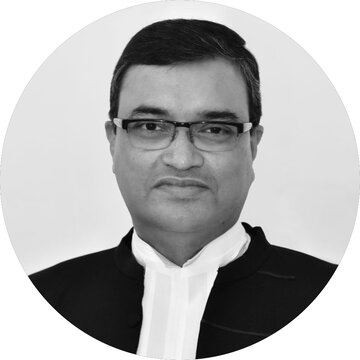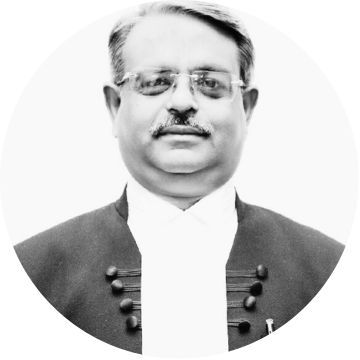Justice Yashwant Varma’s challenge to in-house procedure
XXX v Union of India
Citation: 2025 INSC 943
The Supreme Court will decide on the validity of the in-house procedure initiated against Justice Yashwant Varma in the “cash-in-house” case
Decided
Parties
Petitioner: Justice Yashwant Varma
Lawyers: Senior Advocate Kapil Sibal
Respondent: Union of India
Lawyers:
Case Details
Case Number: W.P.(C) No. 699/2025
Next Hearing:
Last Updated: August 8, 2025
Key Issues
Is the Supreme Court’s in-house procedure unconstitutional?
Is the Judge accused of misbehaviour entitled to his reputation till the inquiry under Judges (Inquiry) Act finds him guilty?
Can a motion in either House of Parliament be based on the report of the in-house committee?
Can the in-house committee recommend removal of the judge found guilty of misconduct/misbehaviour?
Can the CJI forward the report of the in-house committee to the President and the Prime Minister recommending the removal of the judge found guilty by it?
Case Description
Former Delhi High Court Judge Yashwant Varma has moved the Supreme Court, challenging the in-house panel `findings’. The committee had concluded that he had “tacit or active control” of the store room where wads of cash were found.
Incident and initial discovery
The controversy began on the night of 14 March 2025. At the time, Justice Varma was a judge of the Delhi High Court. Firefighters responded to a fire at his official residence in Delhi. During the firefighting operation, personnel allegedly discovered substantial amounts of burnt and partially burnt currency notes in the storeroom of the bungalow. When the incident occurred, Justice Varma was out of town with his wife. This triggered an immediate chain of actions within the judiciary. On 20 March, Chief Justice of the Delhi High Court, D.K. Upadhyaya, conducted a preliminary inquiry and shared photographs and videos of the cash discovery to then Chief Justice Sanjiv Khanna.
Justice Varma categorically denied any knowledge of the cash, stating that neither he nor his family members were aware of its presence. He termed the allegations “baseless”. He also emphasised that his reputation and character, which are “of utmost importance” for a judge, had been “gravely tarnished and irreparably damaged by baseless claims”.
In-house proceedings and report
The Supreme Court responded swiftly.
On 22 March, CJI Khanna constituted a three-member committee comprising Justice Sheel Nagu (Chief Justice of Punjab and Haryana High Court), Justice G.S. Sandhawalia (Chief Justice of Himachal Pradesh High Court), and Justice Anu Sivaraman (Judge of Karnataka High Court) to conduct an in-house inquiry into the allegations against Justice Varma.
On the same day, the Supreme Court uploaded Justice Varma’s response and related documents, including photographs and videos of the alleged cash discovery, on its official website.
On 24 March 2025, the Supreme Court Collegium recommended Justice Varma’s transfer from the Delhi High Court to his parent High Court in Allahabad. The transfer was formalised on 28 March 2025, with explicit instructions that he would not be assigned any judicial work pending the outcome of the inquiry.
On 3 May 2025, the three-member inquiry committee formed by the Supreme Court concluded its investigation and submitted its final report to CJI Khanna. The 64-page report held Justice Varma responsible for “misconduct” and found “strong inferential evidence” of his “covert or active control” over the cash found at his residence.
The committee criticised Justice Varma for failing to provide any plausible explanation for the source of the money, noting that he only offered a “flat denial” and raised a “plea of conspiracy”.
Challenge to the impeachment recommendation
On 8 May, CJI Khanna forwarded the inquiry report along with Justice Varma’s response to President Droupadi Murmu and Prime Minister Narendra Modi. The Chief had recommended initiation of removal proceedings in Parliament.
Faced with the prospect of parliamentary impeachment, Justice Varma moved the Supreme Court over the in-house panel probe. On 17 July 2025, he filed a writ petition challenging the in-house inquiry committee’s report, seeking to quash Chief Justice Khanna’s recommendation for his removal from office.
In his Supreme Court petition, Justice Varma raised several constitutional and procedural objections. He argued that the in-house committee lacked the legal authority to recommend his removal and that only Parliament possessed the constitutional power to initiate impeachment proceedings against High Court judges.
Justice Varma further contended that the in-house panel acted in a “pre-determined manner” and denied him a fair opportunity to defend himself. “The committee drew adverse inferences without concrete evidence against him after reversing the burden of proof,” the plea stated.
According to his petition, the in-house procedure lacked the safeguards provided under the Judges (Inquiry) Act, 1968 and improperly empowered the judiciary to recommend the removal of judges from a constitutionally held office.
The matter reached the Parliament during the monsoon session beginning 21 July 2025. Minister of Parliamentary Affairs Kiren Rijiju confirmed that 158 Members of Parliament, cutting across party lines, had signed the impeachment motion against Justice Varma.
The constitutional process for judicial impeachment requires specific procedural steps. Under Article 124 and the Judges (Inquiry) Act, 1968, a removal motion must be signed by at least 100 members in the Lok Sabha or 50 members in the Rajya Sabha. Once admitted, a three-member committee investigates the charges and the judge can only be removed if both Houses of Parliament pass the motion with a two-thirds majority.
At the Supreme Court
In the meantime, the Supreme Court has navigated several related petitions. The Court is hearing a plea by advocate Mathews J. Nedumpara seeking criminal proceedings against Justice Varma. The SC first directed Nedumpara to approach the President and Prime Minister before seeking judicial intervention. In another instance, a bench comprising Justices Abhay Oka and Ujjal Bhuyan refused urgent mentioning of a plea seeking FIR registration against Justice Varma during the pendency of an in-house proceeding, terming it “immature”. Nedumpara is seeking a declaration that the Court’s previous judgement in K. Veeraswami v Union of India (1991) which bars filing of FIRs against sitting Judges without CJI’s sanction as per incuriam and declare the in-house committee as extra-constitutional.
On 28 July, a Division Bench comprising Justices Dipankar Datta and A.G. Masih started hearing the matter. The case is listed for the next hearing on 30 July 2025.


